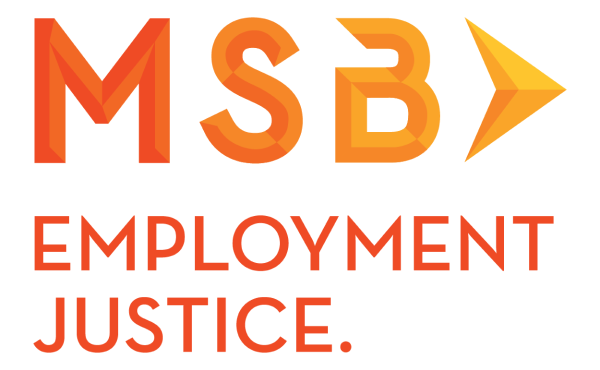If you’ve been wrongfully terminated from your job, it’s likely that you’ve retained an aggressive and smart attorney like those at MSB Employment Justice to prosecute your claims against your former employer. Knowing what the next steps will be and what milestones will be ahead is important, and it’s normal to have questions. Our legal team is here for you every step of the way, and divide your employment dispute into two main stages for the best possible outcome:
- Pre-litigation negotiations outside of the court system, and;
- Litigation i.e. filing an actual court case.
What Is Litigation?
After your attorney has obtained all the information you have available, your attorney will begin drafting an opening correspondence to your former employer. That opening letter will:
- (1) state that we represent you;
- (2) place a litigation hold on all relevant information having to do with your case—advising the company that they legally cannot destroy any relevant information;
- (3) will set forth the relevant facts and circumstances of your employment and termination that gave rise to your legal claims;
- (4) will set out your legal claims by citing the statutes violated and the relevant case law at issue, and;
- (5) will invite the company to engage in pre-litigation negotiations—either through direct negotiations or inviting the other side to set a day aside for a mediation.
If your case settles during this pre litigation stage, the matter is over and you get paid. Usually within about one month of signing a settlement agreement. But if the company wants to fight, then the next stage of the game commences—litigation.
Understanding Minnesota’s “Pocket Service”
Formal litigation begins after your attorney finalizes your complaint and serves it via a process server on the company or its registered agent. This begins a lawsuit. An interesting quirk that Minnesota allows for is something called “pocket service,” which allows for a lawsuit to formally begin for up to one year without actually having to publicly file the case and have a judge assigned.
This allows for another opportunity to show the other side that you and your attorney are ready to go the whole nine yards, without the public step of actually filing the case. Many cases that me and my colleagues have handled settle during this pocket service mini-stage. Regardless, after the case is either served or formally filed, your lawsuit will follow the general framework outlined below.
General Framework of Employment Disputes
Employers file their Answer to the Complaint and Jury Demand (20 days after service).
Attorneys for both sides meet and confer and have a “Rule 26” conference and submit a joint proposed schedule to the court.
The judge considers the proposed joint schedule and files a scheduling order that sets forth the relevant deadlines.
Written discovery commences. The Parties both submit document requests and interrogatories (written questions) to each other when they deem fit. Each side generally has 30 days to answer the questions and submit the documents requested to each other.
Discovery disputes then usually commence. The parties negotiate and fight over what should be answered and produced pursuant to the Rules of Civil Procedure.
Depositions commence. Each side decides who they need to question, under oath, with a court reporter present taking down everything that is said verbatim. For the plaintiff, this is the most important day in my opinion.
The discovery deadline expires and there are now no more opportunities to submit documents, more written questions, and depose individuals—generally speaking.
A motion for summary judgment by the Defendant is submitted. This is where the employer will try to get the case dismissed before trial. After the motion is heard, the judge generally has 90 days to decide this motion.
If the Defendant’s motion is denied and the case goes forward, a final settlement conference is had.
If the case does not settle, Trial!
After closing arguments during the trial, the parties rest and the jury deliberates and decides your case.
Depending on the verdict and issues that arose during trial, post-trial motions then are heard a few months or weeks after the trial.
Depending on those rulings, appeals to higher courts may occur.
Rulings from the appeals court are handed down and a final result occurs if all appeals are exhausted.
Get an Employment Dispute Expert on Your Side
Again, at any point during this process your case could settle. This entire process can be as short as a few months up to six or more years long. The good news is that our expert team of experienced litigators at MSB Employment Justice are all well-versed tenacious trial and appeal attorneys who will communicate their crystal-clear advice on next steps and likely outcomes. Don’t be afraid when you’re with us because we alway #FightBack.
Additional Resources
The following links are more in-depth articles regarding litigation and trial timelines.



